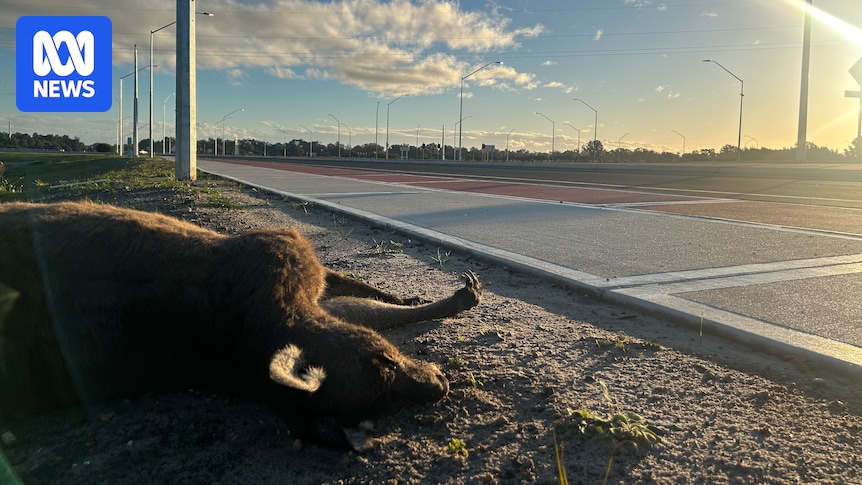Wildlife rescuers in Western Australia’s South West say flawed design and construction of fauna protection measures along the Wilman Wadandi Highway are putting animals and motorists at risk.
In a bid to accommodate wild kangaroos, the $1.46 billion road features fauna underpasses and 64,200 metres of fauna fencing.
There are also 19 rope bridges built for the passage of endangered western ringtail possums.
Animal care group FAWNA president, Suzanne Strapp, said the group had responded to “countless” calls about injured kangaroos and echidnas since the highway opened in December 2024.
The rescuers described the underpasses as dangerous because they were dual-use culverts that allowed animals to come up onto the four-lane highway before reaching the other side of the road.
“Once they’re in there, it’s very hard for them to get out. So they panic and become quite a road hazard,” Ms Strapp said.
Suzanne Strapp says calls about injured wildlife have continued. (ABC South West WA: Jacqueline Lynch)
Transport authority defends infrastructure
The state’s transport authority has defended the highway’s “comprehensive suite” of wildlife protection infrastructure.
A Main Roads WA spokesperson said consultation on the plans came from the Department of Biodiversity, Conservation and Attractions, and were approved by the state and federal environmental protection authorities.
Monitoring involved more than 50 cameras recording several hundred movements of possums and other creatures.
The spokesperson said the location and design of the structures prioritised “the shortest and most practical connection points for fauna, based on known movement patterns and local conditions”.
But they conceded the works on the fauna infrastructure were not entirely complete, despite the highway officially opening seven months ago.
“Some fauna infrastructure is still being finalised as part of ongoing finishing works,” the spokesperson said.
Kangaroos get trapped or injured on the highway, increasing the risk of dying by the roadside. (ABC South West WA: Madigan Landry )
Fauna design doubts
Roo Rescue WA founder, Kim Grant, said she was receiving about a dozen calls a week about kangaroos trapped on the Wilman Wadandi Highway when it first opened.
She said she now regularly relocated the animals that were not already dead on the roadside.
“I don’t relocate [the carcasses]. I’m a volunteer, I’m here to care for the living,” Ms Grant said.
“I can’t do all of the government’s work for them for free.”
Kim Grant says she was averaging a dozen calls a week for injured kangaroos when the highway opened. (ABC South West WA: Madigan Landry)
In addition to the problematic underpasses, Ms Grant said the possum bridges failed to begin and end in healthy possum habitat.
“They’ve put them into dead trees and things, looking for structural integrity in that respect … but the arrival and destination have to be living trees,” she said.
Underpasses open up inside of the fauna fence line on the Wilman Wadandi Highway. (ABC South West WA: Madigan Landry)
Ms Grant and Ms Strapp both have doubts about Main Roads WA’s consultation process for fauna protection.
“Main roads used consultants like ecologists to forecast what was going to occur, but it seems a lot of it was lost in translation, or was just to sort of meet or to tick a box,” Ms Strapp said.
“The erection of all these mitigating constructions is just a slap in the face, and even worse, when you drive along the Wilman Wadandi Highway you see some really beautiful artwork of birds and animals.
“I think the number of animals that have been killed or injured on that road speaks for itself.”

